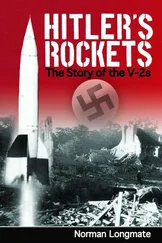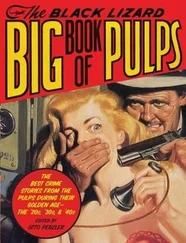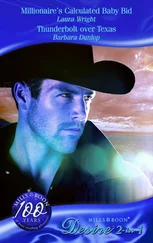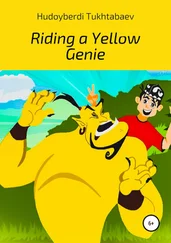Mike Mullane - Riding Rockets
Здесь есть возможность читать онлайн «Mike Mullane - Riding Rockets» весь текст электронной книги совершенно бесплатно (целиком полную версию без сокращений). В некоторых случаях можно слушать аудио, скачать через торрент в формате fb2 и присутствует краткое содержание. Жанр: Старинная литература, на английском языке. Описание произведения, (предисловие) а так же отзывы посетителей доступны на портале библиотеки ЛибКат.
- Название:Riding Rockets
- Автор:
- Жанр:
- Год:неизвестен
- ISBN:нет данных
- Рейтинг книги:3 / 5. Голосов: 2
-
Избранное:Добавить в избранное
- Отзывы:
-
Ваша оценка:
- 60
- 1
- 2
- 3
- 4
- 5
Riding Rockets: краткое содержание, описание и аннотация
Предлагаем к чтению аннотацию, описание, краткое содержание или предисловие (зависит от того, что написал сам автор книги «Riding Rockets»). Если вы не нашли необходимую информацию о книге — напишите в комментариях, мы постараемся отыскать её.
Riding Rockets — читать онлайн бесплатно полную книгу (весь текст) целиком
Ниже представлен текст книги, разбитый по страницам. Система сохранения места последней прочитанной страницы, позволяет с удобством читать онлайн бесплатно книгу «Riding Rockets», без необходимости каждый раз заново искать на чём Вы остановились. Поставьте закладку, и сможете в любой момент перейти на страницу, на которой закончили чтение.
Интервал:
Закладка:
He then called for my mom to start the car. I was so proud of my dad. How many other fathers could do roadside maintenance like this in the middle of the desert? And my dad was doing it on crutches and braces.
As pride swelled my soul, gas began to squirt from the output line of the pump and spray across the hot engine. A vapor of fuel immediately enveloped us. With a gratifying grunt my dad proclaimed, “The fuel pump’s okay.” As he was stating the obvious, I noted a blue spark coming from the distributor wire and flashing to the steel of the engine block. It made a tick, tick, tick sound. I was just about to comment on this spark when an explosion flashed under the hood. KA-BOOM! The fuel vapor had combined with the surrounding air to form an explosive pocket. The spark from the disconnected distributor wire had provided an ignition source. We had just become all too intimate participants in the first test of a fuel-air weapon. Four decades later, the air force would develop just such a weapon for use against terrorists hiding in caves. The press ballyhooed the device. Nothing like it has ever been developed, they crowed. Not exactly. Let history now show my dad was the first to test such a weapon. He did it under the hood of a 1956 Pontiac station wagon at the Teec Nos Pos trading post in northwest New Mexico on June 14, 1963. It worked.
My brothers and I stumbled backward with blasted eardrums and flash-blinded eyes. The smell of burned hair wafted in the breeze. My dad, unable to retreat because of his braces, had fallen straight backward like a cleanly felled tree. He was now a cartoon character with a blackened face and the few remaining hairs on his bald pate burned to cinders. The engine block was on fire. My mom worked furiously to get my youngest brothers and sister and the dogs away from the burning car.
On the trading post porch, the previously lethargic dogs were on their feet barking madly. And the response of the Indians? They roared with laughter. I mean fall-on-the-floor, breath-stealing, tear-welling laughter. Jabbering in their native tongue they pointed at the white man’s folly as if it were a free fireworks show (which it was) and laughed and laughed and laughed.
My dad finally recovered enough to hear the laughter and understand its source. He rolled onto his stomach and made a valiant attempt to crawl to the nearest Indian, no doubt to kill him with his bare hands. John Wayne, leading a silver screen cavalry charge, had never looked as fierce. Thank God, at that moment, Dad couldn’t walk for he certainly would have ended up in prison for manslaughter. Finally, he braced himself on one forearm, shot out an upraised middle finger, and roared, “Shove it up your ass, you bastards!” Even the great cry of “balls” didn’t fit this affront.
Over the barking dogs I again heard my mom’s plaintive cry, “Hugh, not in front of the children.”
Even near-death experiences like this did nothing to dampen my enthusiasm for family trips into the great emptiness of New Mexico. It was an emptiness that pulled the sky closer. I could climb through the clouds and sit on a mountain peak and look down and imagine I was in a jet skimming over the white. I would lie in a meadow and watch thunderstorms build over the Sangre de Cristo Mountains and dream of someday soaring between the canyons of vapor.
But it was the New Mexican night skies that most captured my imagination. I needed only to step into my backyard to be in space. Unlike the light-polluted, haze-shrouded heavens that had domed our previous homes, Albuquerque’s sky was dry and stygian in its blackness. On one occasion, my grandmother visiting from New York City stood with me looking at the night sky and commented, “You won’t be able to see any stars tonight, Mike. It’s cloudy.”
I was baffled by her comment since to my eye the sky was spotlessly clear. “Grandma,” I had said, “there are no clouds. It’s clear.”
“Oh, Mike, sure there are…a long one that goes clear across the sky.” And her hand swept from horizon to horizon. Then I realized she was referring to the Milky Way. The edge view of our galaxy was a fog of stars, a “cloud” to the unpracticed observer.
My dad taught me how to take time exposures of the night sky. I would set one of his cameras in the desert and open its aperture and let the turn of the Earth trace the starlight onto film. Later, with the developed photos in hand, I would marvel at the circles of varying brightness and color the stars had inscribed about Polaris. Occasionally I would catch the streak of a shooting star, a recording that would excite me as much as if I had found buried treasure.
Above Albuquerque the stars and planets blazed with a clarity I had never seen before. They seemed so accessible. With the help of a small Sears telescope and my imagination I traveled this sky on a nightly basis. I would stare at the crescent of Venus and the red circle of Mars and count the brightest moons of Jupiter. The thrill of those observations was no less than what Galileo must certainly have experienced. When a wire-thin sketch of moon was part of the fresco, I would train my telescope on it and imagine I was walking its deeply shadowed craters and mountains. When meteor showers were predicted I would drag a sleeping bag into the desert and lie awake to watch their flashes of fire and pray that one would miraculously land nearby.
But another night sight was soon to thrill me even more.
Chapter 4
Sputnik
On the morning of October 4, 1957, I entered my dad’s bedroom to say good-bye before departing for school. As usual he was drinking coffee, smoking his pipe, and reading the paper. This morning, however, he was purple with rage. “The goddamn Reds have put some type of moon around the earth. Balls! What the hell is Eisenhower doing? What if there’s an H-bomb on the damn thing?”
I picked up the paper and read about the orbiting Sputnik and how the Russians were saying it was just the beginning of their space program. They were working to put men into space. There were interviews with American scientists who predicted our nation would do the same. A smaller sidebar explained that Sputnik would be visible as a moving dot of light over Albuquerque just after sunset.
That evening I stood with the rest of the city population in the cold October twilight to watch the new Russian moon twinkle overhead. My dad watched from his wheelchair, cursing Eisenhower for being asleep at the switch. I was struck dumb by the spectacle. The paper had said the object would be moving at 17,000 miles per hour, 150 miles in the sky. I was mesmerized by the thought of traveling at such speeds and altitudes. The newspaper had said men would someday do it. The science fiction movies of my youth had long depicted manned spaceships flying to distant planets. Now Sputnik proved that was really going to happen. There would be spaceships! I couldn’t imagine a more exciting adventure and I wanted to be part of it. I wanted to fly in space.
Within weeks I was launching my own rockets in the New Mexico desert. These were not the cardboard and balsa-wood rockets seen in today’s hobby stores. Those didn’t exist in my youth. My rockets were multistage steel-tubed devices, five feet in length with welded steel fins, and filled with wicked home-brewed propellants. Basically, my rockets were pipe bombs. How I survived this period of my life, I have no idea. I was a preteen boy mixing rocket fuel in glass jars and tamping it into steel tubes. You couldn’t get closer to mayhem and death than that.
I searched for any source of steel tubing. An early find was the extension piece of my mom’s vacuum cleaner. Its stainless-steel gleam and lightweight construction had rocket written all over it. “It’s perfect, Mom!” I cried. Without hesitation she handed it over. She and my dad were oblivious to the dangers of my experiments. In response to the new celestial Red menace, school-sponsored rocket clubs were organized to get kids interested in science and engineering and the formula for rocket fuel was passed out like raffle tickets. If the school was involved, then it must be safe, was my parents’ erroneous thinking.
Читать дальшеИнтервал:
Закладка:
Похожие книги на «Riding Rockets»
Представляем Вашему вниманию похожие книги на «Riding Rockets» списком для выбора. Мы отобрали схожую по названию и смыслу литературу в надежде предоставить читателям больше вариантов отыскать новые, интересные, ещё непрочитанные произведения.
Обсуждение, отзывы о книге «Riding Rockets» и просто собственные мнения читателей. Оставьте ваши комментарии, напишите, что Вы думаете о произведении, его смысле или главных героях. Укажите что конкретно понравилось, а что нет, и почему Вы так считаете.












